find my iphone
Latest

iOS 13's Dark Mode is on display in new screenshots
Apple's annual Worldwide Developers Conference (WWDC) is less than a week away, but if you just can't wait to get a glimpse of the changes coming to iOS, you're in luck. 9to5Mac posted screenshots showing off some of the new features expected to appear in the upcoming iOS 13, including Apple's new Dark Mode and redesigns to some of the company's first-party apps.
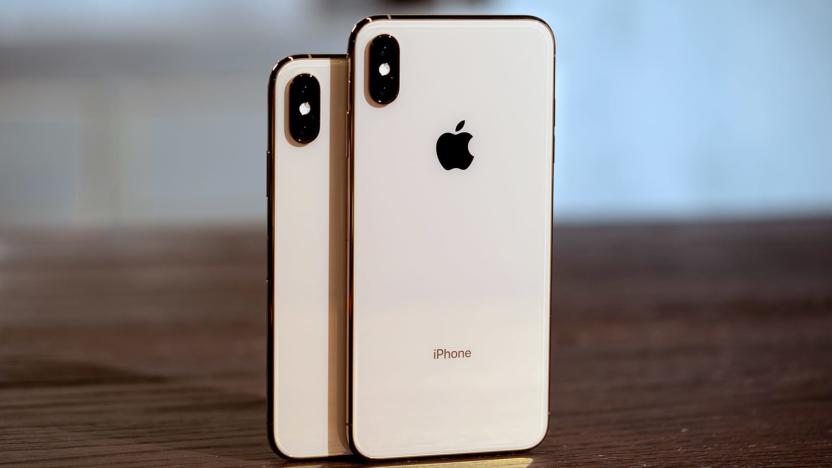
Apple may be developing a Tile-like tracking tag
Apple might be preparing to move into Tile's territory, as it's reportedly developing a physical tag you'd be able to attach to any object to track its location. It's also working on an app that will essentially merge Find My Friends and Find My iPhone, according to 9to5 Mac.
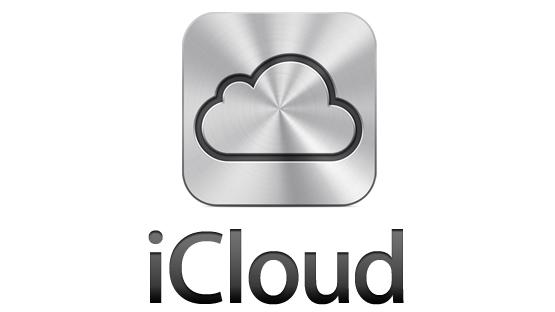
Apple: Celebrity photo breach not due to iCloud or Find my iPhone issues
Apple has just released a press statement updating its investigation into the weekend breach of celebrity photos. As noted in the press release, the company says that none of the cases investigated were the result of any breach of Apple's systems including iCloud and Find my iPhone. Apple believes that it was a "very targeted attack on user names, passwords and security questions" that caused the breach -- essentially saying that it's most likely a social engineering attack that made the photos vulnerable to being exposed to the public. Apple reiterates that using a strong password and two-step verification can help protect against this type of attack. Show full PR text Apple Media Advisory Update to Celebrity Photo Investigation We wanted to provide an update to our investigation into the theft of photos of certain celebrities. When we learned of the theft, we were outraged and immediately mobilized Apple's engineers to discover the source. Our customers' privacy and security are of utmost importance to us. After more than 40 hours of investigation, we have discovered that certain celebrity accounts were compromised by a very targeted attack on user names, passwords and security questions, a practice that has become all too common on the Internet. None of the cases we have investigated has resulted from any breach in any of Apple's systems including iCloud® or Find my iPhone. We are continuing to work with law enforcement to help identify the criminals involved. To protect against this type of attack, we advise all users to always use a strong password and enable two-step verification. Both of these are addressed on our website at http://support.apple.com/kb/ht4232.

A "Find my iPhone" story out of Scotland ends in an iPhone thief's death
The typical "Find my iPhone" story tends to have a heartwarming aspect to it; someone has their iPhone stolen, whereupon they use "Find my iPhone" to track down the thief and reclaim ownership of what is rightfully theirs. And just this week, we happened to cover a story detailing how the feature enabled law enforcement officials to track down and subsequently rescue an injured hiker. This is not one of those stories. Originally reported on the UK-based Daily Record, a Scottish man in Glasgow named Derek Grant used the "Find my iPhone" app to track down the person who robbed his son of his iPhone at knifepoint. Upon tracking down the thief down, Grant stabbed him repeatedly. The iPhone thief, one Patrick Bradley, died of cardiac arrest soon thereafter. Hardly a black and white issue, Grant argues that he acted in self defense. They spotted Bradley, who had a significant record for violence, and Grant told him to hand back the phone. Bradley, 29, instead lashed out and knifed Grant in the left eye. He retaliated and repeatedly stabbed Bradley with a knife he had taken from home because he feared for his safety. Father-of-four Grant was arrested and later said: "I wish to declare for the record that at the time of this incident, I was acting in self-defence." He had faced a murder charge but prosecutors accepted his guilty plea to the reduced charge of culpable homicide. The report relays that a sentence will handed down on September 1.

YouTube Find: How Find My iPhone saved an injured hiker's life
You often hear how Find My iPhone helps locate a stolen to lost handset, but a recent story from Washington's KIRO 7 TV reveals how the service can save someone's life. In this case, the app was the key factor that helped locate of a lost and injured hiker who was hiking at the popular Alpental summit. "We'd still be searching if we didn't have the information off his phone because he wasn't really able to describe where he was," said Peter Linde with the King County Sheriff's Office. He oversees Guardian Two, the county's helicopter rescue crew. The hiker had fallen down the side of a cliff and was unable to climb out due to his injuries. Search and rescue teams searched for him for more than 10 hours, but were unable to find him as he could not describe his exact position. His wife then used Find My iPhone to locate his phone on the map. The search team used this information to match the location to a satellite view on Google Earth. These details allowed them to find the hiker and airlift him to safety. He reportedly is recovering in the hospital from his injury.

Apple adds "Send Last Location" feature to "Find My iPhone"
With each new iOS release, Apple has iteratively lessened the frustration typically associated with losing or misplacing one's iPhone or iPad. First there was the introduction of "Find My iPhone" in 2010. This was enhanced by the launch of "Activation Lock" in iOS 7. And of course, the introduction of TouchID added even another layer of safety into the mix. With iOS 8, Apple has added a new toggle to the "Find My iPhone" feature set. Dubbed "Send Last Location", the toggle, when turned on, automatically sends the last known location of an iPhone to Apple when the battery drains to a critical level. This is a rather smart addition as trying to find an iPhone that's out of juice can be an effort in frustration. (via MacRumors)

Russian authorities arrest hackers involved in Australian ransomware attacks
The individuals behind the recent ransomware attack on iOS users in Australia were recently apprehended in Russia, according to a report published today in The Sydney Morning Herald. Two perpetrators were found to be involved in the attack, one aged 17 and the other aged 23. About two weeks ago, you might recall that the perpetrators began sending "Find My iPhone" messages to iOS and Mac users alerting them to the fact that their devices had been "hacked by Oleg Pliss." To remedy the situation, affected users were instructed to transfer varying amounts of money to an assigned PayPal account. In the wake of the ransomware attacks, Apple issued a statement expressing that iCloud had not been compromised. As many folks previously believed, the hackers involved relied on phishing techniques in order to steal user credentials. In announcing the hackers had been detained, the Ministry of Internal Affairs said its Interior Ministry had successfully "stopped the activities of the group of persons involved in the blocking of Apple devices to extort funds". It said the hackers used two "well-established" schemes to conduct their activities. "The first was to gain access to the Apple ID of a victim's account by creating phishing pages, [gaining] unauthorised access to email, or using social engineering techniques," Russia's Ministry of Internal Affairs said. "The second scheme was aimed at binding ... devices to a pre-arranged account." As a general safety reminder, remember that it's always important to avoid using the same login credentials across multiple web services.

The TUAW Daily Update Podcast for May 28, 2014
It's the TUAW Daily Update, your source for Apple news in a convenient audio format. You'll get some the top Apple stories of the day in three to five minutes for a quick review of what's happening in the Apple world. You can listen to today's Apple stories by clicking the player at the top of the page. The Daily Update has been moved to a new podcast host in the past few days. Current listeners should delete the old podcast subscription and subscribe to the new feed in the iTunes Store here.

Ransomware worries? Turn off Find My Mac/Find My iPhone
Note: Here's how to enable 2-step authentication for your Apple ID. It's been a rough day Down Under; several iOS and Mac users have found their devices held "ransom" by a hacker leveraging Apple's Find My iPhone and Find My Mac services. Australia's The Age reports information acquired by recent security breaches, combined with the human tendency to reuse security credentials across services, may have led to the lockouts. The normally-helpful (or at least benign) Find My X services can indeed be used for ill, as Wired's Mat Honan learned last year to his regret. It's noteworthy that iPhone users who have a passcode in place should be able to recover access, as long as the passcode was created outside of setting up Find My iPhone. In this post, I'll explain how to disable Find My iPhone/iPad and Find My Mac, as well as how to create a passcode on your iOS device. First, let's disable those services. Note that you must know your iCloud account information to turn off either of the Find My X services -- that's the point, really, as a thief presumably would not know your password and wouldn't be able to unlock or reinstall your purloined device with FMx turned on. Disable Find My iPhone/iPad This is quite easy to do. Just follow these steps: Open the Settings app on your iPhone or iPad. Tap iCloud. Scroll to the bottom of the list, and move the slider labeled "Find my iPhone" to the Off position. You'll need to authenticate with your iCloud password. That's it. On the Mac, the process is just as simple. Disable Find My Mac Launch System Preferences. Click iCloud. A new pane appears. Scroll to the bottom of the list on the right. De-select Find My Mac. (If you aren't using it, best to uncheck Back to my Mac as well -- if your iCloud password was compromised then BTMM could also be a security risk.) Again, you'll need to authenticate with your iCloud password. Create an iOS passcode Just to be sure that you can unlock your device locally if you do re-enable Find My iPhone, it's a good idea to set a passcode. (If you have an iPhone 5s and you enabled the Touch ID feature, iOS forced you to create a passcode, so you're all set.) These screenshots are for iOS 7, but the iOS 6 process is similar. Open the Settings app. Scroll down to Passcode. If you've never created a passcode before, toggle Turn Passcode On. You'll be prompted for a short (4-digit) numeric "simple passcode" or a longer/complex alphanumeric passcode. Pro tip: Even if your employer or educational institution requires a complex passcode via MDM, you can still access the "quick entry" numeric keypad for your passcode... just create an all-numbers passcode of the minimum length or longer, and you won't have to peck out the unlock code on the full keyboard.) Once your passcode is enabled and verified, you can set the timeouts for passcode access, which apps can be accessed from the lock screen, and more. In general, Apple's recovery/security services like Find My iPhone are a very good thing, and beneficial to have up and running -- as long as you observe reasonable password hygiene with your iCloud credentials, which are the "keys to the kingdom" for iOS app purchases, iTunes music, your iCloud email and iWork online documents... well, you get the idea. But turning off Find My iPhone is a reasonable temporary measure if you're concerned about this kind of hack attack, or worse things that could happen with a compromised iCloud password. Michael Rose contributed to this post.

Australian Apple users held to ransom by Find My iPhone hacker (updated)
Some Australian Apple device owners today woke up not to the sound of their alarm, but the jingle of a "ransom" notification instead. The Sydney Morning Herald reports that a hacker (or a group of hackers) going by the name "Oleg Pliss" systematically froze iPhone, iPad and Mac users out of their own devices, holding them hostage until payments of between $50 and $100 were received. Threads on Apple's official support forums detail how the attacker (or attackers) used Apple's own Find My iPhone feature to remotely lock devices and send messages requiring payment via PayPal. Fortunately, those who had set passcodes were able to regain access, because you can't add or change a lock on a device that already has one in place, but those without the security measure weren't so lucky.

iOS and Mac users in Australia locked out of their devices via "Find my iPhone" ransomware
Some iOS and Mac users in Australia this morning woke up to a concerning message indicating that their devices had been remotely locked by a hacker demanding upwards of AU$100 to unlock them. Originally reported by The Age, affected users ("dozens" reported issues on social media or Apple's discussion boards) were alerted via a "Find My iPhone" message that their device had been hacked by "Oleg Pliss", a name not believed to be associated with the true perpetrator or perpetrators. Troy Hunt, an IT security expert, speculated that hackers were using compromised login credentials from recent data breaches to access accounts and lock users out. As is often the case, web users largely use the same password across their multiple online services, meaning that if their password is compromised in a breach at one firm and they do not change it, their other accounts become vulnerable. As a general rule, employing the same password across multiple sites is potentially dangerous and should be avoided. Password reuse can lead to a number of security issues, including compromised accounts and more If you happen to be an affected user looking to alleviate the issue, relevant support threads have sprung up on Apple's website with users sharing information as to how to deal with it. Notably, The Age relays that iOS users who set up passcodes before enabling Find My iPhone can unlock their devices with no problem; those who set up the passcode as part of the Find My iPhone process may not be able to unlock the device without assistance. Update: Gigaom alerts us to the fact that an iOS user in the U.S. is now claiming to have been hit with the ransomware as well. [Hat tip 9to5]
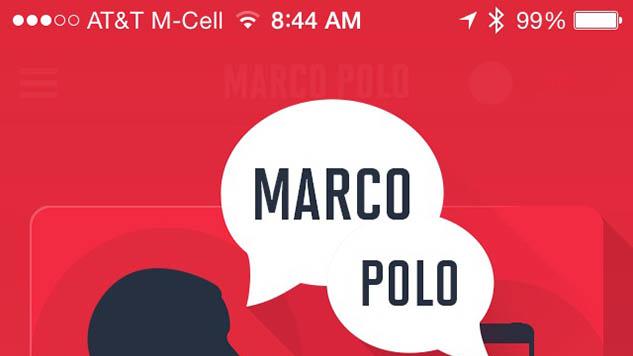
Marco Polo: find your iPhone by shouting at it
If you're like me, you spend a fair amount of time looking for your iPhone. Did it fall between the couch cushions, or is it still in a pants pocket? Marco Polo (US$0.99) can solve that problem and find your iPhone in a jiffy. When you run the app it stays in the background listening for the phrase "Marco". When it hears that word, it responds "Polo". It's simple, and pretty effective. I tried Marco Polo around the house, first putting the phone on a dresser. That was an easy one -- I said "Marco" and the phone replied. I also put the iPhone under a couple of blankets, and that worked too. Then I put my iPhone in a drawer in the kitchen, and while the sound was muffled, I could hear it respond. Obviously, if I got too far away -- like two rooms away -- it wouldn't trigger. But I would be quite happy to shout out a couple of different "Marco's" to find my lost phone. There are some customization settings. You can type in another word besides "Marco" to use to trigger the response, but the phone will always say "Polo". The response voices can be customized too, which is a nice touch. The app doesn't require an Internet connection to work. There is an option to use the loudest volume your device is capable of when responding, even if your iPhone volume is set to its lowest setting. Marco Polo is tuned to North American English for now, but other dialects may be coming. The app is a nice alternative to Find My iPhone, because GPS just doesn't work that well (or at all) within a house. On the other hand, if you have no idea where your phone is outside the home, Marco Polo won't be helpful. Marco Polo runs on any iOS device, and by customizing the trigger phrase you can distinguish between, for example, an iPad and an iPhone. Some notifications may be silenced while Marco Polo is running; that's just the way Apple engineered iOS. Phone calls, calendar alerts and clock alarms will always get through. I don't have the tools for precise measurement, but I didn't see any significant drain on my battery while the app was running. My only suggestion for the developers is that once the phone says "Polo", it might be nice if it emitted a repeating tone to make it easier to pinpoint without having to go through the house yelling "Marco" over and over. Marco Polo is a creative application that works well. It requires iOS 7 or later and it is optimized for the iPhone 5.

Please don't attempt to hunt down your stolen iPhone on your own
The story of a California woman hunting down an iPhone thief has been getting a lot of attention recently. Sarah Maguire of West Hollywood awoke after a night on the town to find both her own iPhone, and her roommates', were nowhere to be found. She booted up Find My iPhone, went to the address and convinced the perpetrator to give the phones back. Hooray for citizen justice! But before you put on your vigilante hat and begin using the built-in iDevice locator service as your own crime-fighting tool, think it through. Maguire's story is a very, very unique one, and the chances that a thief is going to willingly hand over your stolen property is probably slim to none. Confronting such an individual -- or group of individuals -- is not only extremely dangerous, it's also pretty foolish. In this particular instance, Maguire notes that a call to the local police department was met with advice to seek out the phone on her own, and to call back if she felt she was in danger. I honestly have a hard time believing the police actively encouraged her to hunt down the thief on her own, as doing so would seemingly make them at least partially liable for a potentially disastrous outcome. If they did indeed point her in that direction, I'd like to think it was a fluke and a mistake that would not be made again. There are several stories out there of theft victims pointing the police towards the possible perpetrator only to be told that Find My iPhone is simply too unreliable to warrant a search or confrontation involving police. On the other side of the coin, there are many tales of police doing exactly that, and using the GPS data from the device to track and retrieve it. It seems to change on a case-by-case basis, and in the end it's up to each individual precinct or officer to decide how to handle the situation. Find My iPhone vigilantes aren't a new trend, and their failings are well documented. Taking matters into their own hands, individuals have gotten into violent altercations with the people found to be holding their precious gadgets, and have even accidentally attacked the wrong people, ending up behind bars themselves. Regardless of your local law enforcement's outlook on Find My iPhone, nothing should ever push you to a confrontation with a thief. File a police report, make the data from the Find My iPhone feature readily available and clear, wipe the device remotely if you are able, and put your personal safety above that of your smartphone.
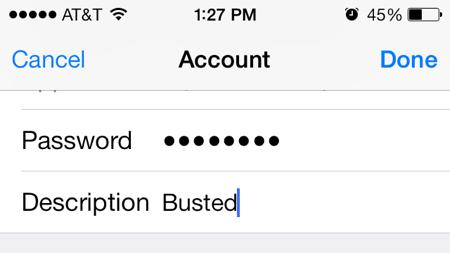
iOS 7 bug lets you turn off Find My iPhone without authorization
Find My iPhone is often the best tool for finding a stolen device, especially since the phone prompts a user for their password before allowing the feature to be turned off. But now, a bug found in iOS 7.0.4 by Bradley Williams seems to allow anyone with the phone in their possession to bypass iCloud's security feature and shut off Find My iPhone without needing to wipe the phone or perform any other drastic steps. You can check out the glitch in Bradley's video above, but it's pretty simple to pull off: Simply enter an incorrect password in the iCloud account information, then delete the "description" field. The phone then disables the "Find My iPhone" feature automatically, keeping anyone from finding the device using the iCloud tools provided by Apple. As MacRumors points out, the bypass doesn't seem to work in the beta version of iOS 7.1, which is due to be released shortly, so there's a good chance Apple already caught wind of it and has since plugged the hole.
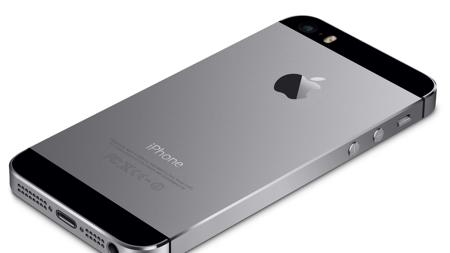
4 ways to find your lost iPhone (and keep it from getting lost again)
2014 is just waking up and its house is trashed. There are champagne stains on the carpet, and its iPhone is nowhere to be found. Yikes. If you've followed in the New Year's footsteps and similarly misplaced your pricey pocket computer, there are a few things you can do to find it and prevent an unfortunate instance from ever happening again. Find My iPhone is a good bet if you had a night on the town and can't find your handset the next morning. It tracks the path of your iPhone and shows you its current GPS location while also notifying anyone who found the phone that it is indeed lost. For even more nuanced location data, GPS Phone Tracker is a great alternative. You can set the app to log your phone's location as often as every two minutes, which will give you the best chance of finding your phone's current location as well as how it got there. You can set up permissions for friends or other trusted users to view your phone's location, so you'll always have someone who knows where your phone is. Where's My Cellphone is a simple website that will call your phone for you. You can time the call or have it ring immediately, which is handy if you need to check your car or other location (far from your computer) for the device. The site has been used more than 14 million times already, and it will continue to be a go-to for the foreseeable future. If you find that you're losing your iPhone on a daily basis, you can go all-out and buy a protective case that also helps you locate the device. BiKN is a system of tags that go on important objects -- like your keys, purse, etc. They locate each other by activating alert tones. If you can find one of the objects you have a BiKN on, you can find them all. The iPhone case works hand in hand with the BiKN app to both help you find your important stuff, and have your important stuff find your iPhone for you.

Stolen iPhone cuts assault spree short, helps nab suspects
A group of three teen boys attacked a 30-year-old Winnipeg man and by the next day the three were placed in cuffs, thanks in large part to the fact that the suspects decided to steal the victim's iPhone during the assault. As CBC reports, after assaulting the first victim and snatching his Apple smartphone, the teens took photos of themselves using the stolen device and were eventually tracked down thanks to what is being described as "a tracking app" by the authorities -- I'm guessing it was Find My iPhone or something similar. Later in the evening, a second victim was assaulted, this one just 15 years old, and the police were able to link the two crimes thanks to photos the suspects unknowingly were syncing to the iPhone owner's iCloud account. The following day, all three were tracked down, arrested and charged. Isn't technology wonderful? [via The Daily Dot]

Find My iPhone, Podcasts, Movie Trailers apps all updated
And the march of Apple software updates keeps on coming. Apple has just issued new releases of the Find My iPhone, Podcasts and Movie Trailers iOS apps. Here's what's new in each one: Podcasts What's New in Version 2.0 Podcasts 2 introduces a stunning, all-new design for iOS 7 and adds useful features you'll love. Designed for iOS 7 • Podcasts has a beautiful new look and feel that fits right in with iOS 7. • The Podcasts Store is now located in the Featured tab, making it easier than ever to discover great podcasts. • The new Search tab makes finding podcasts in the Podcasts Store fast and simple. • Top Charts now shows podcasts and episodes in a simple list, so it's even easier to see what's popular. • You can now view your stations as a list of episodes, or group them by podcast. Stay up to date • Podcasts now automatically update with new episodes - even while the app is not open. • Choose how often the Podcasts app checks for updates to get the latest episodes as soon as they become available. • iCloud now keeps your subscriptions, stations, and play position in sync with iTunes and Apple TV. This version of Podcasts also includes improvements to responsiveness and playback performance. Movie Trailers What's New in Version 1.3 iTunes Movie Trailers has been updated with a beautiful new design for iOS 7. Find My iPhone What's New in Version 3.0 • All-new design for iOS 7 All these iOS apps are free downloads.
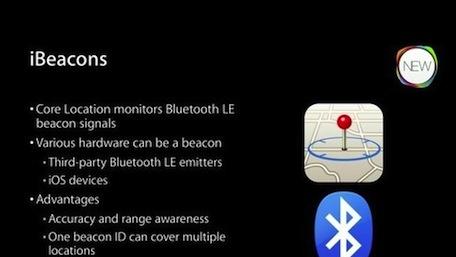
iOS 7 iBeacons: An unsung feature with immense promise
While the world is getting up to speed on iOS 7's more visible features like Control Center and the dazzling parallax effects, there's one feature that hasn't gotten a lot of attention -- iBeacons. TidBITS author Michael Cohen wrote a great piece this week that talks about the feature and what it can do for iOS device owners in the future. iBeacons was just a word on a slide at WWDC 2013, but as Cohen points out, it has the potential to provide some amazing functionality. To quote Cohen, "Apps can use iBeacons to answer the question 'Where am I?' not in terms of a location on a map, like GPS does, but in terms of where the device is relative to another device. Specifically, where it is relative to another device acting as an iBeacon." An iBeacon is a radio that can be placed anywhere, and when an iOS device gets near it, it can estimate how far apart the device and iBeacon are. Any iPhone 4S or later, and any third-generation iPad or later, has the ability to be an iBeacon through the use of Bluetooth 4.0 and Bluetooth Low Energy (BLE). As Cohen explains it, BLE devices are battery-friendly and can run for weeks without recharging. So how could they be used? Well, a store could set up iBeacons in each department or aisle, so you could use a store directory app and get in-store directions to something you're looking for (are you listening, Home Depot?). Museums could offer tour apps, and Cohen even imagines a future version of Find My iPhone that would work inside a house, finding that iPhone that slipped between couch cushions. Third-party standalone iBeacon devices will start at about US$100 each, and Cohen posits that the price may drop quickly and significantly due to the popularity of iOS. Right now, there's really nothing that takes advantage of iBeacons, but this is a capability of iOS 7 that is just waiting for the right app to come along.

How to use multiple Apple IDs in iOS 7
If you have been used to using different Apple IDs for different apps in iOS 6, you can still do that in iOS 7, but some of the details have changed. One of the first complaints that came in was about Find My iPhone, with several people writing in worried that Apple had done away with the ability to use different Apple IDs with the app. But there is a "Sign Out" button on the first screen. Simply tap that button, and you will be able to use a different Apple ID for Find My iPhone. (Aside: you really should be using Find My iPhone, especially with the new improvements to it that came with iOS 7, which make it harder for anyone who might steal your iPhone to disable the feature.) The same is also true for Messages, but the logout button is a bit harder to find. You have to go to Settings » Messages » Send & Receive. At the top of that window you will see the Apple ID currently associated with Messages on that iOS device. Tap it, and you will be shown several options, including one to sign out of Messages. Likewise, FaceTime has a setting under Settings » FaceTime » Apple ID. Tap it, and the same options will appear as described for Messages. The same goes for iTunes and the App Store. And Game Center. And so on. The options are there, even if they aren't always immediately available. So if you need to use separate Apple ID accounts, start your search in the Settings app, and work your way from there. Update 11:27 AM: Thanks to Greg Deichler for pointing out to me on Twitter that I had missed an important detail. If you want to use Find My iPhone on iOS 7, you must do so using the primary iCloud account on the device. As with iOS 6, you can add additional iCloud accounts in iOS 7, but they do not have access to "Find My iPhone." I have always set up our family's iOS devices using the "family" Apple ID as the main iCloud device, and then added the personalized iCloud accounts as a secondary account, so I did not notice it had changed. You can see the difference by comparing the images below, showing the "Add a Secondary iCloud Account" options. So, I take it back: Apple did change this, and they changed it for the worse. I don't know why Apple changed this, but I am hoping that it is a temporary oversight that will be fixed in a later release of iOS 7.

Stolen car with child inside tracked and found by Find My iPhone
By now we've heard several stories about how Find My iPhone has allowed someone to recover a stolen iPhone, iPad or Mac. Today, that story gets a new twist because the app was instrumental in helping police track down a stolen car with a 5-year-old child inside. As reported by ABC, a father's SUV was stolen in Houston last night when he ran into a store to quickly pick something up. When he came back out of the, his SUV was gone -- along with his 5-year-old who was in the back seat. That would normally be enough to make anyone panic, but the quick-thinking father realized that his iPhone was also in the car, and as he still had his iPad on him, he opened up the Find My iPhone app to track the vehicle. The father called the police and used the app to relay the vehicle's location and route. As Lt. Wayne Schultz from the Harris County Precinct 4 Constable's Office told ABC News: "The father had an iPad that he'd taken in with him and he utilized that iPad with the iPhone that was in the car and was able to track it. And the information was provided from our deputies to our dispatch, that was able to be communicated through the Harris County Sheriff's Office dispatch also and they were able to get information out to the troops in the field to where we could disseminate information in almost a real-time environment to put it out to guys who were looking for the vehicle with the child in it." Fifteen minutes after the car was stolen, police stopped it, arrested the suspect and the child was found unharmed in the back seat. [via 9to5Mac]









